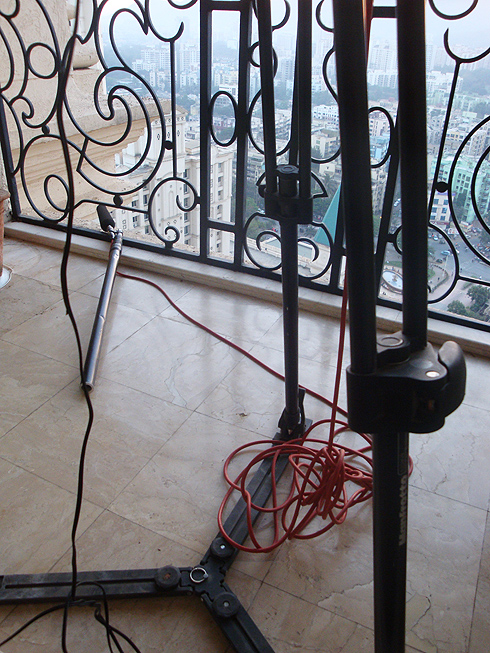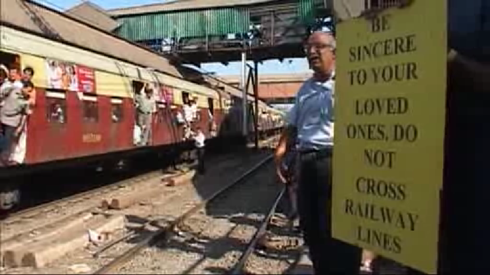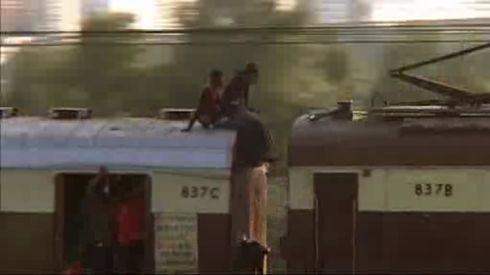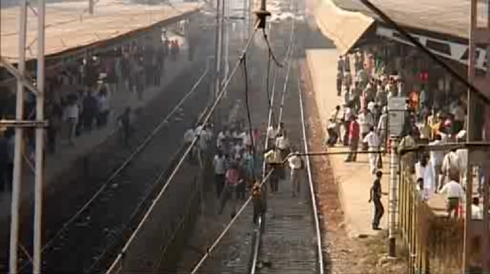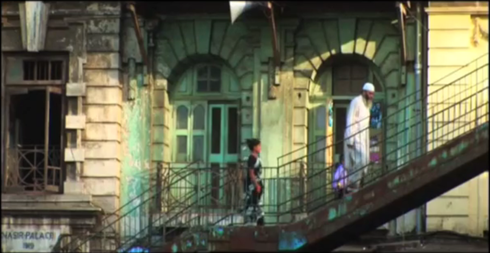Documentary: Bombay Railway
Bombay Railway is a two-part documentary by BBC 4 that paints a picture of an overcrowded train system pushed to its limit by 6 million commuters a day, full of people who strive towards their goals tirelessly, in the city of dreams that is Mumbai. I was a frequent traveller myself, so it was interesting to watch the documentary which is from the point of view of an observer rather than someone who has lived the experience. What we call "Crush" is the super rush hour that's also mentioned in the film, and the statistics and video footage is more frightening than actually travelling in the crowd. As an observer, the sight of 5000 or more people getting into trains meant for 1200 people within 30 seconds is a spectacle. As a participant it's an exciting, thrilling, and somewhat harrowing daily reality. The fact is that the local trains are cheap, charging about 1 penny a mile and the trains are always on time with a 97% efficiency, so despite the odds the system is dependable and vital to the normal functioning of Mumbai.
In the first part of the film, the stories about runaway kids living on Mumbai platforms sounds sunny and positive, giving the audience hope that things could turn out well for these children that have escaped abusive families. However describing a railway station as a "family" where you get to "be yourself" is overly optimistic and misleading. Most of these runaways end up being abused, drugged and treated badly. I have seen them being thrashed by cops or others on more than one occasion. Life for kids in such places is rarely a happy place.
Various other issues such as illegal hawking, crossing tracks, and the terrorist bombings are also mentioned. Below are a few screenshots from the film:
Documentary: Shot in Bombay
[vimeo http://www.vimeo.com/6735583] The documentary uses a lot of "typical" shots of Mumbai, shots of the streets, children, and film sets, with catchy Bollywood music in the background. The opening sequence above is especially successful in creating a rich, romantic atmosphere. Here are some screenshots from the sequence which best represent this slice of the city:
Related Posts that study the city's representations in the media: Bombay Cinema, An Archive of the City | Elsewhere Places | Bombay Book Cover | 26/11 Attack | Dharavi Documentary | Places we Live
Group Critique
Overall Feedback:Brian Catling (performance artist and poet) mentioned that I could add a layer of virtual shadows to the video installation, in addition to the real shadows thrown by the audience. He also mentioned that since the user's action is central to viewing the work, it's almost as if the user is causing the resulting violence/action, in this case the image of a burning building that becomes visible only in the user's shadow. In answer to my question about the kind of space I should use for the installation, he said that using a clean, "constructed" white room would work best with the concept. There was a brief discussion on the lack of sound used, and he thought that sound was not required at all.
Several artists and films that could help develop my practice were mentioned: such at Kit Wise, Rope by Hitchcock and "London" and "Robinson in Space" by Patrick Keiller. I was also directed to Foucault's theories of Heterotopia, Dystopia and Utopia; "Non Places - Introduction and an Anthropology of Super Modernity" by Mare Ange and the History of the Shadow by V. Strichita.
Reflection: The use or lack of sound is an important issue which I still have to properly integrate into the concept of the bipolar, constructed realities. However I agree with Brian in that the sound itself is not very important to the installation. It is a concern to me that the sound or music could dominate the visuals. The result should be dream-like, since dreams have a tendency to have faded or muted sounds when remembered. Examples of appropriate sounds are: muted voices, very low volume music, or something subtle such as crackling of fire and gunshots in the distance. During the presentation I also realized that a subtle difference between the "here" and the "elsewhere" is better than an overly dramatic and "literal" difference. The space itself is still an issue which I need to work on to some extent. A large part of phase 2 will be building on the space, experimenting with the use of objects along with projectors, and trying the 360 degree panorama. Overall, creating the presentation helped me organize my thoughts in terms of the kind of framework and process I followed, looking at the gaps in my reasoning and further steps I needed to take in my research.
Notes: Topics to read further: Para-Feminism, Invisible artwork, Family photographs as imposed memories, Leonard Talmy: Force Dynamic in language: "door is closed" vs the "door cannot be opened." Uses of Enchantment by Bruno: interesting book about fairy tales, Costume vs. Fashion is the folk (narrative, story) vs. elite (market, consumer); Physiology of taste by Brillat Savarin; Dutch golden age (objects with meaning, symbols) - using a room or a window to project against or using meaningful objects in the installation; Shadows: Using shadows in different tones, different light sources. Also interesting is the book Praise the Shadow; Constructed Reality: creating from photographs, memory, or not even that, but just found photographs is one step down. Films: Many Moons (2008) b Janelle Monae; Coraline (animation); Eraserhead by David Lynch


